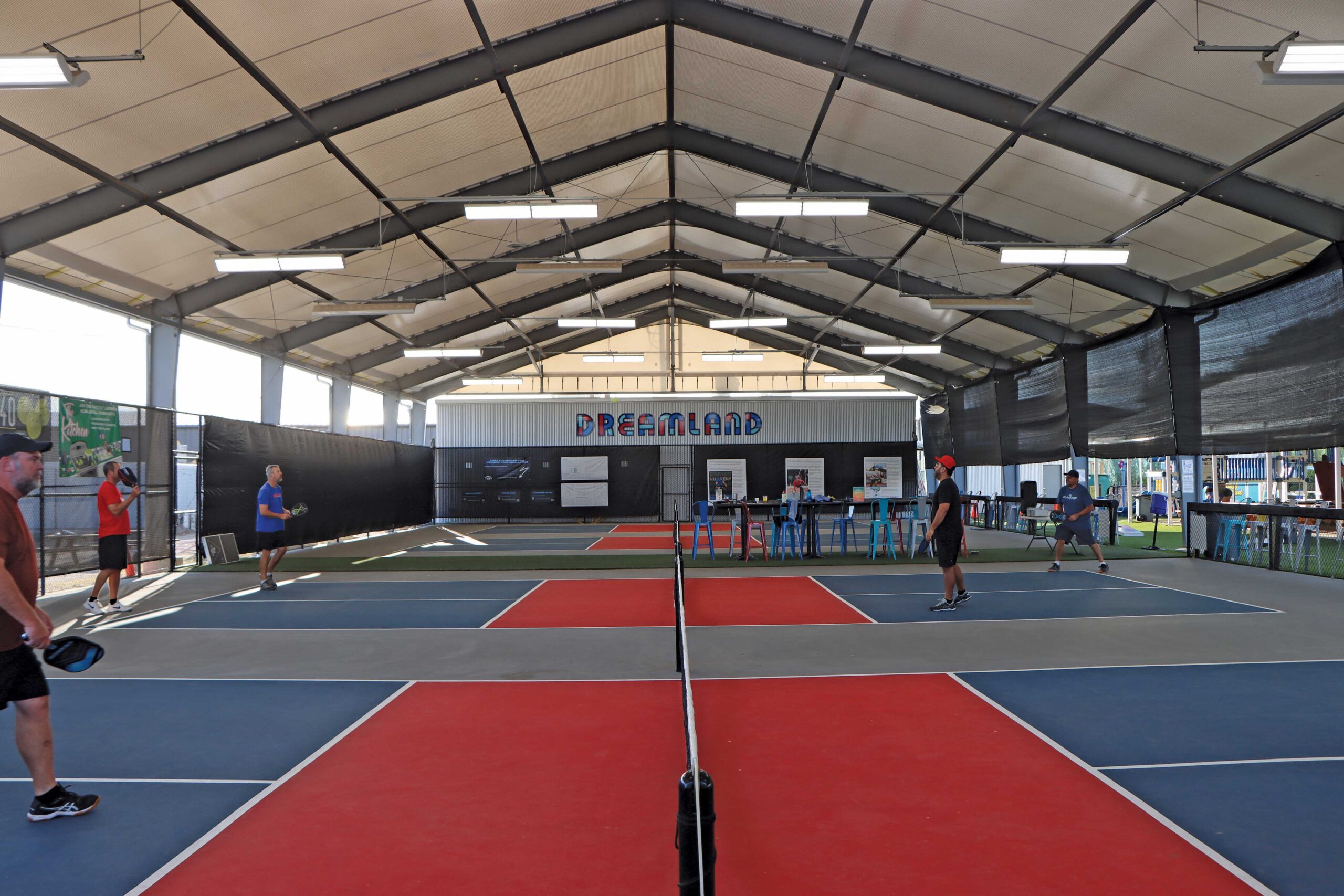Comprehensive Guide to Pickleball Judiciaries Style & Construction in Illinois and Midwest
Comprehensive Guide to Pickleball Judiciaries Style & Construction in Illinois and Midwest
Blog Article
Trick Consider the Building And Construction of Pickleball Courts: From Site Option to Final Finishes
The construction of pickleball courts encompasses a range of important factors, beginning with the selection of an ideal website that stabilizes access with ecological considerations. Vital aspects such as court dimensions, surface area materials, and drain systems considerably influence not just the quality of play however additionally the durability of the center.
Website Choice Standards
When embarking on the building of pickleball courts, it is important to toenail down the site option requirements that will make sure ideal playability and accessibility. The location has to be easily reachable for players, ideally located near houses or recreation center, to urge engagement.
Moreover, the surface ought to be level and steady, as unequal ground can bring about safety hazards and affect gameplay. Sufficient drain is additionally crucial; choosing a site with good water overflow will certainly aid preserve court conditions during damaging weather condition.
One more crucial consideration is the availability of energies. Accessibility to electrical energy and water is necessary for illumination and maintenance purposes. Additionally, closeness to auto parking facilities is vital, helping with very easy access for gamers and spectators alike.
Ecological factors can not be neglected; natural shade from trees can boost gamer comfort, while exposure to prevailing winds might interrupt play. Finally, zoning guidelines and neighborhood assistance should be thought about to guarantee that the job straightens with regional standards and obtains the backing it requires for successful application. By meticulously evaluating these standards, stakeholders can produce an inviting and practical atmosphere for pickleball lovers.
Court Dimensions and Design
To make certain ideal gameplay and adherence to policies, the measurements and design of pickleball courts have to be very carefully defined. A typical pickleball court gauges 20 feet in width and 44 feet in length for both songs and increases play. The suggested layout consists of a non-volley zone, commonly referred to as the "cooking area," prolonging 7 feet from the net on either side. This area is critical, as it influences gamer positioning and shot option - Illinois and midwest.
The web height is established at 36 inches at the sidelines and 34 inches at the center, producing a mild dip that impacts ball trajectory. Court markings are equally vital; lines should be 2 inches vast and distinct in shade to ensure visibility.
Additionally, a buffer zone bordering the court is a good idea, typically extending 5 to 10 feet past the sidelines and standards to accommodate gamers' activities and boost safety. Appropriate design and measurements not just make sure conformity with main guidelines however also improve the overall having fun experience, suiting both recreational and affordable play. Mindful planning in these locations is critical to the successful building and construction of pickleball courts.
Surface Area Material Options
Picking the right surface area product for pickleball courts is critical YOURURL.com for guaranteeing optimum player performance and safety. The choice of surface area can dramatically impact gameplay, including sphere bounce, grip, and player comfort.
There are numerous choices available, each with its distinct features. Asphalt is a popular option due to its resilience and reduced upkeep needs. It provides a solid playing surface that can withstand different climate condition but might need periodic resurfacing.
Concrete is one more commonly used material, using exceptional long life and a smooth finish. It permits consistent sphere bounce but can be hard on players' joints, making it much less preferable for long-lasting play without correct padding.
For those seeking enhanced convenience and shock absorption, supported acrylic surface areas offer a viable alternative. These surfaces combine a base layer with an acrylic topcoat, supplying boosted grip and a softer feel, which is helpful for reducing the threat of injuries.
Lastly, artificial grass is getting grip, particularly for multi-purpose facilities. Its versatility and reduced upkeep requires make it an attractive choice, though it may not give the exact same sphere action as typical tough courts. Mindful consideration of these choices will ensure an optimum playing setting.
Drainage and Illumination Considerations
Correct water drainage and efficient lights are essential components in the building of pickleball courts, considerably affecting both playability and safety and security. Adequate drainage systems prevent water buildup, which can lead to unsafe surfaces and damage to the court framework.
Illumination is just as important, specifically for courts planned for night usage. Appropriate illumination improves presence, making sure that players can see the ball clearly and lowering the risk of accidents. The placement of illumination components ought to be purposefully prepared to get rid of shadows and supply even circulation of light throughout the court. LED lights are advised for find here their energy effectiveness and durability, offering bright lighting while lowering functional prices.

Last Finishes and Maintenance
After attending to drain and lights considerations, attention transforms to the last coatings and recurring maintenance of pickleball index courts. Common alternatives include acrylic coatings and specialized sporting activities surface areas that offer ideal grip and padding.

Seasonal maintenance could include resurfacing every few years, relying on use and ecological factors. Effectively keeping internet, court lines, and surrounding locations is similarly vital to provide a risk-free and pleasurable playing experience. By purchasing high quality finishes and adhering to a structured upkeep schedule, center proprietors can ensure their pickleball courts continue to be in exceptional condition for many years to come.
Conclusion
In conclusion, the effective building of pickleball courts hinges on careful interest to several essential aspects. Top quality coatings and a robust maintenance timetable are crucial for preserving the court's condition, improving the total experience for players and spectators alike.
Report this page